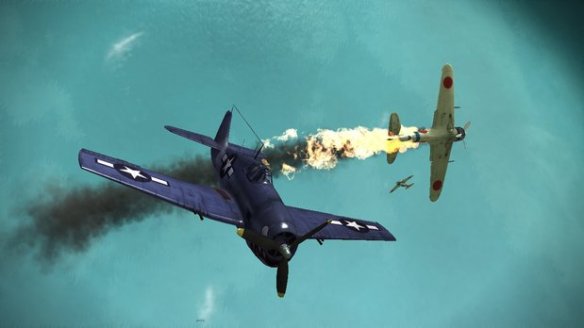The single most important factor in that lop-sided kill ratio is overclaiming.
The Japanese did try to match the good points of their fighters against the relative weaknesses of their opponents.
It was often hard to do when the Americans so often held the initiative.
Here’s an example to illustrate both points. On January 18th, 1944 four squadrons of P-38s and two squadrons of P-47s flew a sweep to Wewak. The Japanese scrambled 21 type 3 fighters and 36 type 1 fighters. Six squadrons against 5 Sentai. Numbers were just about equal. US fighters both had much higher ceilings, faster maximum speed and heavier armament. What happened. Per a P-38 pilot’s report:
“The enemy pilots apparently were experienced as they would lead our planes to tree-top level and turn sharply…The enemy consistently dived to the deck and disappeared throughout the entire combat. We could not pursue because of our lesser manoeuvrability and the extremely low altitude.” Another P-38 pilot rated the Japanese pilots as “experienced, determined and aggressive.”
Despite the above comments US fighters claimed 14 kills for the loss of three fighters. The Japanese also claimed 14 victories and actually lost three fighters.
Given equal numbers, by maximizing their tactical advantages the Japanese could fight high performance fighters to a draw.
Incidentally on two occasions in Dec 43 and April 44 type 1 fighters engaged superior numbers of P-47Ds and shot down P-47s without suffering loss. Two on the first occasion and three on the later occasion. These were not fluke surprise attacks but extended engagements. As another example, on Dec 18th 43 when the 433d FS claimed three but lost two P-38s they actually only scored one victory.
We all know about VF-16 Hellcats slaughtering 252 Ku Zeros near Tarawa in November 43. Despite the overclaiming these were lop-sided Hellcat victories but arguably due as much to radar controlled long range interception as any other factor. Few realize in the first air combat of the Gilberts campaign (over Nauru) six Zeros took on two US air groups lost one Zero, damaged a couple Hellcats and shot down a TBF.
I think the whole air campaign in the Pacific merits re-examination in light of currently available information rather than constantly rehashing former data and opinions.
